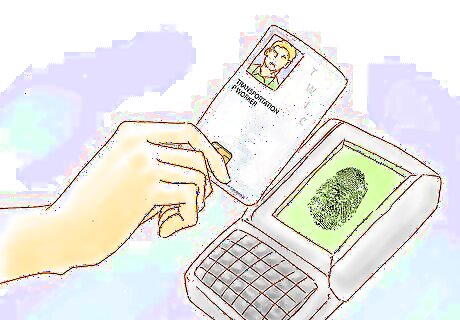
views
X
Research source
Getting your first job on an oil rig may be the toughest part of the process, because oil rig managers value experience. Find out how to become an oil rig worker.

Ensure you meet the minimum qualifications for employment on almost any oil rig. They are the following: You are over 18 years of age. You are very physically fit. You should also be mentally fit. You will be required to pass a physical exam before being hired. You are a non-smoker, and you can abstain from alcohol during your long 14 to 21 day shifts. You are willing and able to take on the unusual schedule of an oil rig worker. You should be open to working nights, and you should be able to work many days on end without weekend breaks.

Gain experience as a mechanic. Many oil rig workers have mechanical jobs. You can also seek training as an electrician, cook, medic and engineer to become a valued part of the auxiliary oil rig staff.

Get in touch with friends, family members or acquaintances who are oil rig workers. If you do not know anyone, ask around. This contact will help you to understand the work and give you valuable contacts in the industry. If you can't find any connections to current oil rig workers, go online and look at industry chat boards. You may find important information on the best employers, the worst employers and who is looking for workers at the moment. Make sure not to take all Internet chat seriously, as many people use it for a way to complain or argue.

Research the oil industry. Take a community college course, an online course or simply go to the library and check out books about oil drilling, oil workers and the newest information on the changes and regulations in the petroleum industry. You should be able to prove to employers that you have interest in the petroleum industry and that you are willing to do the work needed to be a valuable employee. You will not seem like such a novice if you are well versed in important topics. You can also quiz your oil rig contacts on topics or employers you should research.

Search for job postings online and in newspapers. Go online to large job search sites like Monster, CareerBuilder and Indeed to find current listings for oil rig workers. Study those listings to ensure you have all the qualifications to start in on an oil rig. Titles of oil rig jobs may include: Derrickman, Safety man, Driller, Assistant Driller, Sub Sea Engineer, Storekeeper, Crane Operator, Mechanic/Electrician, Rig Welder, Barge Engineer, Rig Medic, Toolpusher or Mudman. Sometimes people working hard labor jobs on oil rigs are called "roustabouts."

Search for job postings in newspapers and through contacts in the oil industry. Look for entry-level positions with on the job training.

Create a resume and cover letter. List all the jobs you've had that have skills that might translate onto an oil rig. Highlight any jobs where you have worked as a laborer, worked as a mechanic or electrician. A cover letter is traditionally a half page to a full page of text describing in prose why your experience makes you a good choice for the job. A resume should be approximately 1 page, but it can be up to 2 pages. Focus on your qualifications and any praise you have received for being a fast learner, team worker or dependable employee. Target your resume to the job that you are applying for, and change it slightly for each application.

Apply for jobs. Try to apply for a number of jobs at the same time, because you will face more competition with entry level work.

Seek a Basic Offshore Safety Instruction and Emergency Training (BOSIET) certification. This is essential for work in the UK, Netherlands or Denmark. You can also consider getting a certificate for Helicopter Underwater Escape Training. Look for these training courses at marine safety academies or schools. Many seaside colleges in the UK and the United States have a marine safety school.

Apply for your Transportation Worker Identification Credential (TWIC) Credential if you plan to work in the United States in offshore drilling. Go to twicprogram.tsa.dhs.gov to get an application. You will need to visit a TWIC enrollment facility to apply. You will need to give fingerprints, biographic personal information, identification documents and photographs. The Transportation Security Administration (TSA) will evaluate the information and send the TWIC approval to the enrollment center.


















Comments
0 comment